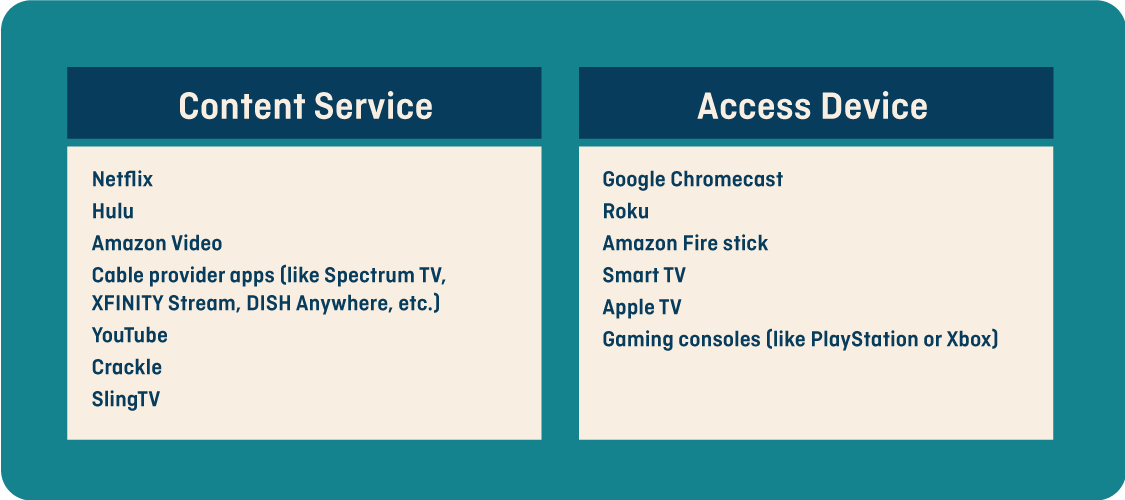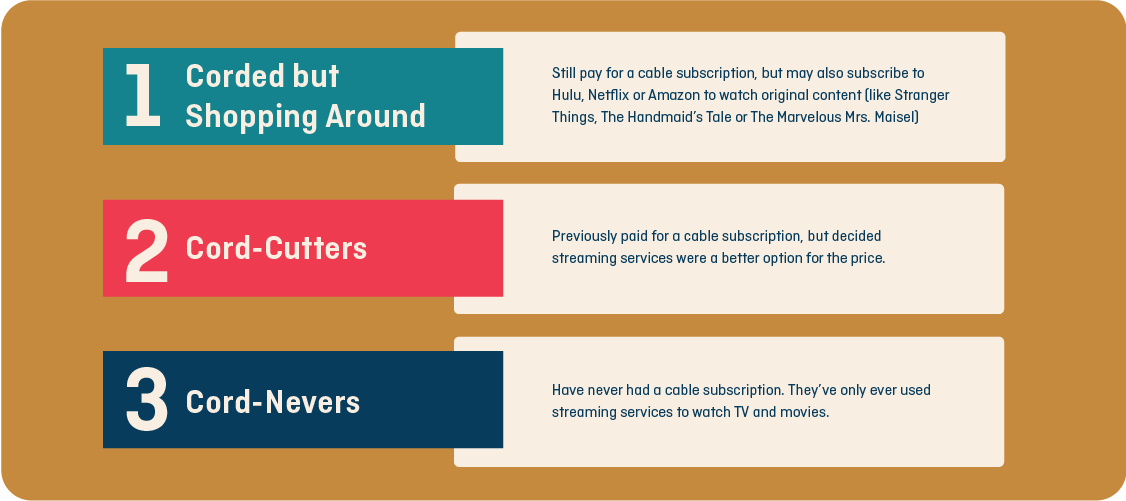

Contact Jen to learn about how we can deliver results for you.
Update your branding campaigns with connected TV
57.2. That’s the percentage of the US population that will watch OTT/connected TV in 2019, according to eMarketer. Despite viewership at nearly 60% of the population, many marketers aren’t allocating budget to this important channel – leaving a huge area of opportunity.
OTT (over-the-top, also called connected TV) is video content (like clips, movies or TV shows) delivered via internet rather than cable providers or broadcast networks.
There are two main elements of OTT: the content service, and the device. The content service is the aggregator or publisher of the videos, TV shows and movies. The device is simply the hardware required to access the content.

OTT ads can be purchased directly from the content service, where ads will only run on that service (like Hulu). Purchasing OTT this way is great for national advertisers whose products and services can be used anywhere, like major CPG or e-commerce brands.
OTT ads can also be purchased or through a separate platform that provides access to ad inventory across multiple content services (called a Demand-Side Platform or DSP). This method is great for local or regional advertisers with smaller audiences because it can make inventory available across Hulu, YouTube, Crackle and more, all within the desired geography.
OTT viewers generally fall into one of three categories:

Data on each of these audiences can vary significantly by source. Anecdotally, cord-nevers tend to be younger than their corded and cord-cutting counterparts. Cord-cutting is a common phenomenon among younger families, while corded households tend to skew slightly older and suburban/rural.
OTT offers traditional broadcast or cable TV advertisers a number of benefits. OTT has a leg up with advanced targeting capabilities, most of which are not yet available at scale for broadcast and cable. Targeting options for OTT include behavioral or purchase data. Instead of targeting TV ads to women aged 25-34, an auto dealership could reach people in the market for a new car, for example.
However, the primary benefit of OTT is simple – reach. With eMarketer reporting estimates of nearly 20% of the population cutting the cord, OTT can no longer be ignored as a channel to reach prospective customers.